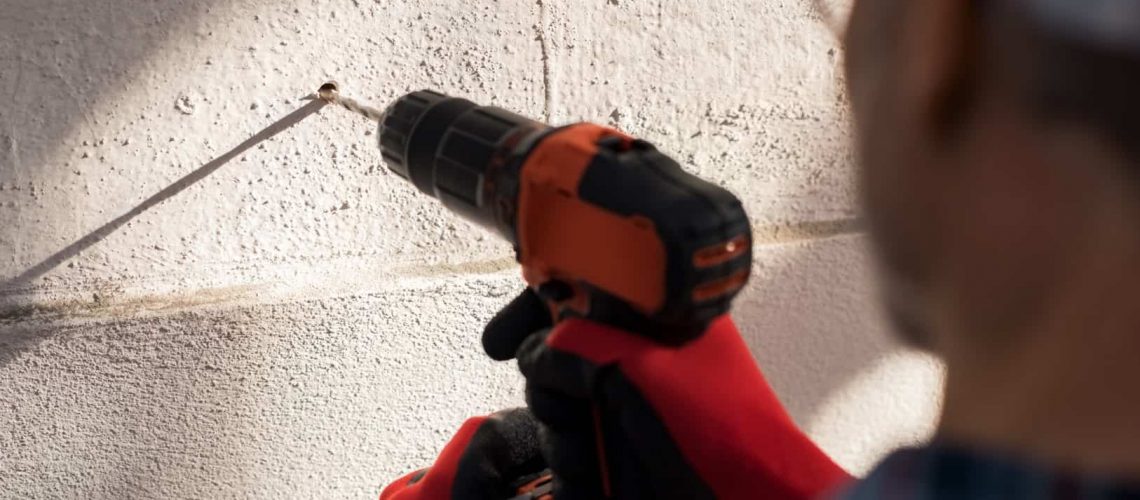You have a heavy project in your hand, and your drill starts messing up with not enough power? It sounds dreadful, but it is time to check on your drill torque settings. This article entails every detail you need to know about the drill’s insufficient torque.
Speed and torque share an inverse relationship. Torque is the force that provides power to the drill for rotating the object; it works as a gear that ensures the screw’s twisting force for the best gauge. It depicts how powerful your drill is; however, it’s all about speed in the latest models of power drills, whereas torque usually gets neglected. Moreover, another reason may include users being unaware of the torque settings and operating the drill on full speed settings, giving insufficient torque.

All You Need To Know About Drill’s Torque
Torque in a drill works the same as the clutch in a car. After reaching a specific limit, you have to change the car’s gear to increase the speed, i.e., rotation of the wheels. As you press the clutch, the car’s speed drops, and it increases right after you release the grip and the gear shifts.
The same phenomenon goes with the drill; as you increase the speed, the drill’s toque automatically decreases. It Results in a drill not having enough torque and control while drilling at high speed. Whereas, when you shoot at medium torque settings and low speed, you get access to better drilling and controlling.
Now that you know, owning a household tool like a drill is essential to carry out basic home improvement projects. It is not necessary to grab the drill and turn it on to get your work done. Instead of as straightforward as the drills may look, there are several ways that it may mess up your project with no power. Ultimately force you to think about Why Does My Drill Doesn’t Have Enough Torque?
So, let’s learn more about what is the torque of the power tool? Torque settings, how does it work? And what happens in case of incorrect torque?
What Is Torque Role In Power Tools?
Torque is the force that causes an object like the screwdriver to rotate and gauge onto the project. It is measured in Newton Meters (Nm). It does not turn the thing but ensure the power with which the drill works. The more the Newton Meter, the drill provides more twisting force onto the object for better gauging.
Now that you know what does torque does? You might be thinking of keeping your torque at the highest torque setting for the drill to work at maximum speed. However, as mentioned earlier, speed and torque have an inverse relationship. More the rate less the torque, now you might be thinking why would one keep their torque low and why not enjoy the drill application at maximum? Here is to your why and how’s
Why Should Torque Setting Be Kept On Medium?
While working on home improvement projects, you are obliged to work carefully rather than heinously. Thus, there might come multiple occasions where you have to turn down the torque setting to fix small projects or handling delicate objects. By slowing down the torque, you may get the chance to control the drill better and carry out more comprehensive job options.
For example, to be more precise, consider working with screws to drill into soft wooden pecks or wooden chairs. Now, if you keep torque on full settings or high speed, more likely, your wooden block may beak, or your screw may get damaged.
What Could Happen If Torque Settings Are Not Adjusted Properly?
Several issues and mishaps might occur if the drill settings are not set off appropriately. If your drill has undersigned torque or maximum torque settings, here are few things to consider:
Driving Your Screws
If your drill does not have enough torque, then drilling or driving a screw into a small object like a plank of wood might become a headache for you. IT might lead to work exhaustion and ruining up your project finishing. Whereas, if you have your set on top, it definitely will take your efforts to control the drill with more human power. Moreover, driving your screw with such a high setting might get your screw to shoot over the mark and end up breaking or ruining the wood or project.
Doffing the Screw Again
If you do not have sufficient torque in your drill, it is nearly impossible for you to work on heavy objects like hardwood and so on. As you try to drive a screw into the hardwood, it might get stuck and end up heating your drill, ultimately leading to burnt-out in vague. Whereas, if you have torque settings high on, you are less likely to feel any resistance even when the screw is wholly fixed into the hardwood. Now, as the screw has no place to drive in more, it is stuck there with force. Even if you try to strip off the screw, you might damage the screw head first or damage the project later on.
How To optimize Torque Settings in a Drill?
To optimize your drill control, you need to maintain a perfect balance between torque and speed settings. If you are about to get a drill, here are few things to consider:
Torque Settings
Torque tends to make your drill handing finer. If you wish to complete control over your drill, consider getting a drill with maximum torque settings. Here are two factors to optimize the drill’s torque:
Newton Meters on Drills
For minimal home projects or smaller screwdriver tasks, hands-on drill having torque settings of about four to five Newton Meter.
For hole drilling and working with medium size screws, grab an all-rounder drill with 15-35 Newton Meters torque settings.
To work on heavy projects, holes, or bigger screws, 35 Newton Meter or upward torque settings are good to go with.

